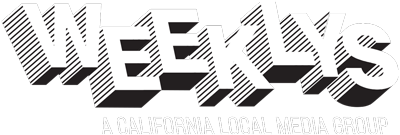Gilroy
– For the more than 300 students at South Valley Middle School
that are two grades behind in reading, a chance at help has
dissipated.
By Christopher Quirk Staff Writer
Gilroy – For the more than 300 students at South Valley Middle School that are two grades behind in reading, a chance at help has dissipated.
At its last meeting, the Gilroy Unified School District Board of Directors decided not to employ Scientific Learning to continue the Fast ForWord program, which had been implemented in a trial run last spring and again this past fall.
The program at South Valley used auditory software aimed at increasing students’ awareness of differences in phonemes, or the components of words. The trial program cost the school a “minimal” amount of money, said Olivia Schaad, assistant superintendent for the GUSD, because Scientific Learning lent it the supplies and provided technical support, To fully implement the program the district would have had to shell out $80,000 per site annually.
“I really enjoyed the program. The kids really enjoyed the program,” said John Perales, principal of South Valley. But, he concluded: “The quantitative data doesn’t support the thousands of dollars the program costs.”
The statistical analysis conducted by the district showed that randomly selected students participating in the Fast ForWord program had an average percentile growth of 11.3. Students in a control class, which had instruction as usual, had an average percentile growth of 10.6. This means that while both classes moved up in relation to the national average, neither class showed a statistically significant increase relative to the other. Other school districts, including Oakland’s and Los Banos’ showed marked gains in students’ reading abilities after implementing Fast ForWord.
“It’s hard for me to say why it didn’t work,” Perales said. “We had a lot of language learners in that program and maybe that wasn’t the right angle for them.”
Schaad said she was hoping for a percentile growth of double what was seen in either class.
“These kids are already three to four grades behind,” Schaad said.
Perales estimates that 300 of the 750 students at his school are reading at a level at least two grades below the one they’re in. In 2006, only 33 percent of South Valley students scored proficient or advanced on the California Standards Test, whereas 42 percent of students statewide scored proficient or advanced.
To combat students’ continuing difficulty with reading, South Valley, along with other schools in the district including Gilroy High School, is testing a program this semester called READ 180. Under this instructional model, students alternate among reading and studying at a computer independently, discussing topics in small groups and reviewing material as a large class.
To try the experimental method, South Valley has created four classes, each of which has 21 students. While the administration will monitor students’ progress, it will be difficult to discern if READ 180 is successful. Unlike with Fast ForWord, students were selected to participate in the new program because they scored a one or two, the lowest possible marks, on the California Standards Test. Thus, there will be several confounding factors in comparing the trial and control groups, including demographics, past performance and familiarity with the English language.
Perales also plans on visiting San Jose’s Lee Mathson Middle School, which has a similar student population, but higher performing students.
Perales, now in his second year at South Valley, remains optimistic.
“It takes a good three to four years to get a school back on track. We’re going to see growth and we’re going to continue to see growth.”















